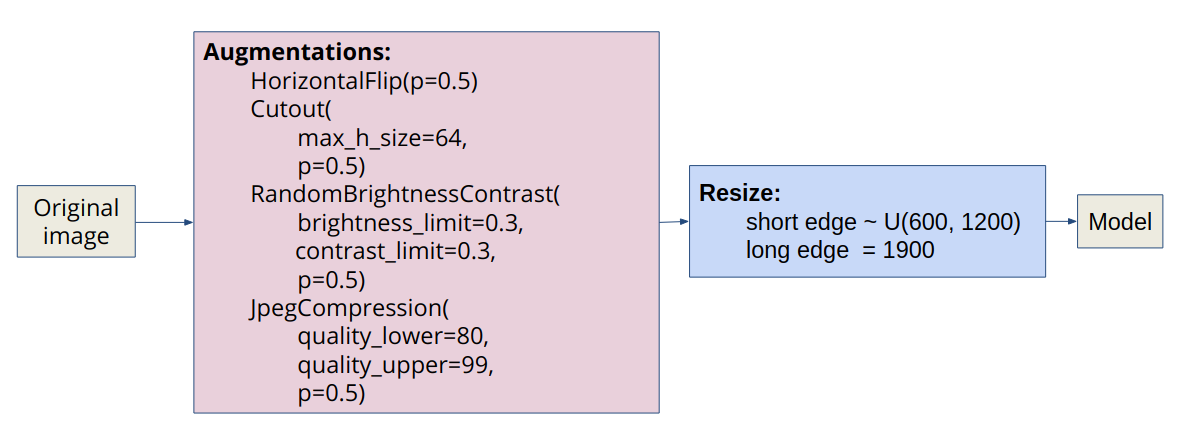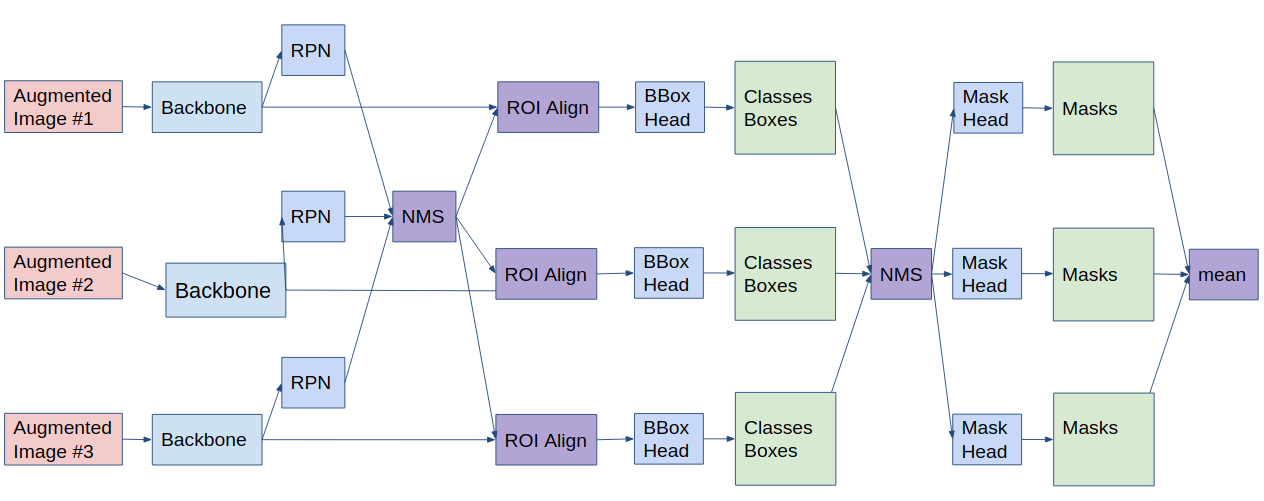amirassov / Kaggle Imaterialist
Programming Languages
Projects that are alternatives of or similar to Kaggle Imaterialist
The First Place Solution of iMaterialist (Fashion) 2019
Solution
My solution is based on the COCO challenge 2018 winners article: https://arxiv.org/abs/1901.07518.
Model:
Hybrid Task Cascade with ResNeXt-101-64x4d-FPN backbone. This model has a metric Mask mAP = 43.9 on COCO dataset. This is SOTA for instance segmentation.
Validation:
For validation, I used 450 training samples splitted using https://github.com/trent-b/iterative-stratification.
Preprocessing:
I applied light augmentatios from the albumentations library to the original image. Then I use multi-scale training: in each iteration, the scale of short edge is randomly sampled from [600, 1200], and the scale of long edge is fixed as 1900.
Training details:
- pre-train from COCO
- optimizer:
SGD(lr=0.03, momentum=0.9, weight_decay=0.0001) - batch_size: 16 = 2 images per gpu x 8 gpus Tesla V100
- learning rate scheduler:
if iterations < 500:
lr = warmup(warmup_ratio=1 / 3)
if epochs == 10:
lr = lr ∗ 0.1
if epochs == 18:
lr = lr ∗ 0.1
if epochs > 20:
stop
- training time: ~3 days.
Parameter tuning:
After the 12th epoch with the default parameters, the metric on LB was 0.21913. Next, I tuned postprocessing thresholds using validation data:
rcnn=dict(
score_thr=0.5,
nms=dict(type='nms', iou_thr=0.3),
max_per_img=100,
mask_thr_binary=0.45
)
This improved the metric on LB: 0.21913 -> 0.30011.
Test time augmentation:
I use 3 scales as well as horizontal flip at test time and ensemble the results. Testing scales are (1000, 1600), (1200, 1900), (1400, 2200).
I drew a TTA scheme for Mask R-CNN, which is implemented in mmdetection library. For Hybrid Task Cascade R-CNN, I rewrote this code.
This improved the metric on LB: 0.30011 -> 0.31074.
Ensemble:
I ensemble the 3 best checkpoints of my model. The ensemble scheme is similar to TTA.
This improved the metric on LB: 0.31074 -> 0.31626.
Attributes:
I didn't use attributes at all: they were difficult to predict and the removal of classes with attributes greatly improved the metric.
During the whole competition, I deleted classes with attributes: {0, 1, 2, 3, 4, 5, 6, 7, 8, 9, 10, 11, 12} U {27, 28, 33}. But two days before the end I read [the discussion] (https://www.kaggle.com/c/kaggle-imaterialist-fashion-2019-FGVC6/discussion/94811#latest548137) and added back classes {27, 28, 33 }.
This improved the metric on LB: 0.31626 -> 0.33511.
Postprocessing for masks
My post-processing algorithm for avoid intersections of masks of the same class:
def hard_overlaps_suppression(binary_mask, scores):
not_overlap_mask = []
for i in np.argsort(scores)[::-1]:
current_mask = binary_mask[..., i].copy()
for mask in not_overlap_mask:
current_mask = np.bitwise_and(current_mask, np.invert(mask))
not_overlap_mask.append(current_mask)
return np.stack(not_overlap_mask, -1)
Small postprocessing:
I deleted objects with an area of less than 20 pixels.
This improved the metric on LB: 0.33511 -> 0.33621.
How to run?
Docker
make build
make run-[server-name]
make exec
Build mmdetection:
cd mmdetection
bash compile.sh
python setup.py develop
Prepare pretrained weights:
bash prepare_weights.sh
Data structure
/data/
├── train/
│ └── ...
├── test/
│ └── ...
└── train.csv.zip
/dumps/
└── htc_dconv_c3-c5_mstrain_x101_64x4d_fpn_20e_1200x1900/
Fix the error in train.csv.zip.
Prepare annotations for mmdetection:
cd scripts
bash create_mmdetection_train.sh
bash create_mmdetection_test.sh
bash split.sh
Training the model:
CUDA_VISIBLE_DEVICES=[list of gpus] bash dist_train.sh [config] [gpus] [--validate]
My best checkpoint:
https://yadi.sk/d/-raqliq_ad6r_Q
Test the model:
CUDA_VISIBLE_DEVICES=[list of gpus] bash dist_test_ensemble.sh [config] [gpus]




